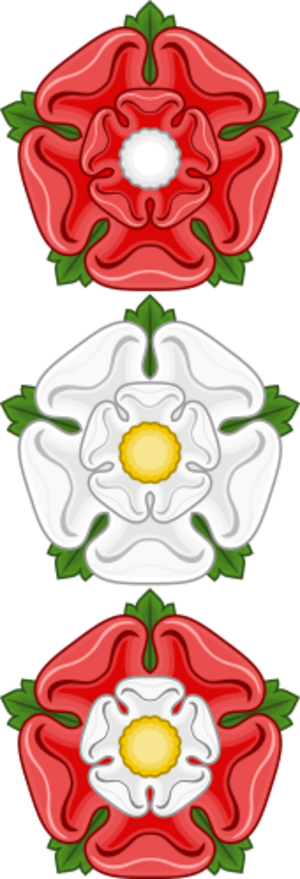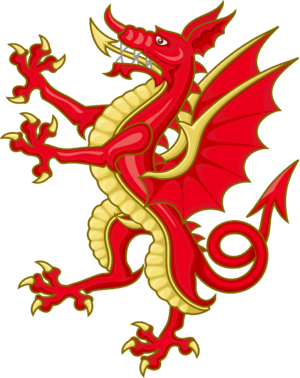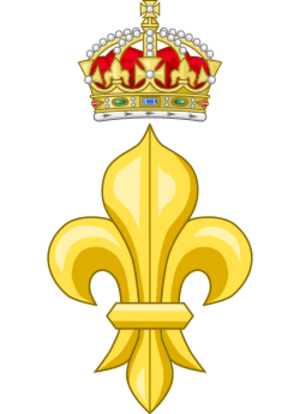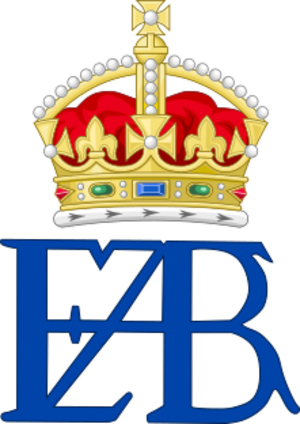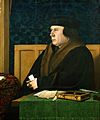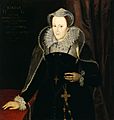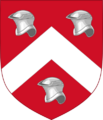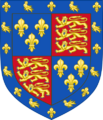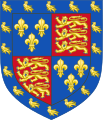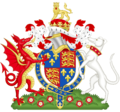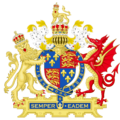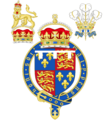Tudor dynasty facts for kids
Quick facts for kids House of Tudor |
|
|---|---|
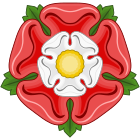
|
|
| Parent house | Tudors of Penmynydd |
| Country | |
| Founded | 1485 |
| Founder | Henry VII (first Tudor king) |
| Final ruler | Elizabeth I |
| Titles |
|
| Dissolution | 24 March 1603 |
The Tudor dynasty was a family of kings and queens who ruled England. This line of rulers began in 1485 and lasted until 1603. The Tudor period was a time of big changes for England, including new ideas about religion and important events like the defeat of the Spanish Armada.
Contents
The Tudor Story: Kings and Queens
The Tudor family became powerful when Henry VII won the Battle of Bosworth Field in 1485. This battle ended the Wars of the Roses, a long fight for the English throne. Henry Tudor then became the new King of England.
Henry VII's oldest son was Arthur. Arthur married Catherine of Aragon, a princess from Spain. Sadly, Arthur died in 1502 and never became king.
When Henry VII died in 1509, Arthur's younger brother, Henry VIII, became king. Henry VIII then married Catherine of Aragon.
Henry VIII and His Children
Catherine and Henry VIII had six children, but only one, their daughter Mary, lived to be an adult. When Catherine could not have more children, Henry divorced her. He then married Anne Boleyn. Henry and Anne also had a daughter, Elizabeth I. Anne Boleyn was executed in 1536.
Soon after, Henry VIII married Jane Seymour. Jane gave birth to Henry's only son, Edward VI of England. Edward later became king when he was just nine years old. Jane Seymour died in 1537 from problems after Edward's birth. Henry married three more wives before he died in 1547.
Edward VI's Short Reign
After Henry VIII died, his young son Edward VI became king. In 1553, Edward became very ill. He tried to change who would rule after him. He wanted his cousin, Lady Jane Grey, to be queen. Lady Jane Grey was queen for only nine days.
Mary I: "Bloody Mary"
Henry's daughter, Mary I of England, became the next ruler. Mary strongly believed in Catholicism. As Queen, Mary punished many Protestants. She ordered the execution of hundreds of Protestants. Because of this, she was called "Bloody Mary."
Elizabeth I: The Virgin Queen
After Mary died in 1558, her half-sister Elizabeth I became queen. Unlike Mary, Elizabeth was a Protestant. Elizabeth never married or had children. Because of this, she is often called the "Virgin Queen." Most people in England liked her very much.
The Tudor family's rule ended when Elizabeth died in 1603. She had not named a person to be ruler after her. When she died, James I became King of England. He was the son of Elizabeth's cousin, Mary, Queen of Scots. This began the Stuart dynasty.
Religion in Tudor England
During the Tudor period, there were many big changes in religion.
At first, Henry VIII was a Catholic. But when the Pope would not let him divorce Catherine, Henry left the Catholic Church. He then made himself the head of the Church in England. This new church was Protestant.
Edward VI was raised as a Protestant. He closed all Catholic churches in England.
Mary I was a strong Catholic. She had grown up in Spain with her Spanish mother, Catherine of Aragon. When she became queen, she closed Protestant churches. She also had about 300 people burned for being Protestant. These people were later called martyrs.
Elizabeth I was a Protestant. When she became queen, the Anglican Church was started. After Elizabeth, religion in England became much calmer.
Tudor Monarchs of England and Ireland
Here are the six Tudor monarchs:
| Portrait | Name | Birth | Start of Rule | Marriages | Death | How They Became King/Queen |
|---|---|---|---|---|---|---|
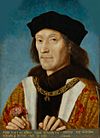 |
Henry VII | 28 January 1457 Pembroke Castle |
22 August 1485 | Elizabeth of York | 21 April 1509 Richmond Palace aged 52 |
Won the throne in battle. Also related to Edward III of England. |
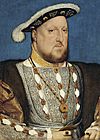 |
Henry VIII (first King of Ireland) |
28 June 1491 Greenwich Palace |
21 April 1509 | (1) Catherine of Aragon (2) Anne Boleyn (3) Jane Seymour (4) Anne of Cleves (5) Catherine Howard (6) Catherine Parr |
28 January 1547 Palace of Whitehall aged 55 |
Son of Henry VII and Elizabeth of York |
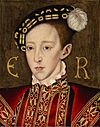 |
Edward VI | 12 October 1537 Hampton Court Palace |
28 January 1547 | — | 6 July 1553 Greenwich Palace aged 15 |
Son of Henry VIII and Jane Seymour |
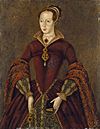 |
Jane (disputed) |
1537 Bradgate Park |
10 July 1553 | Lord Guildford Dudley | 12 February 1554 executed at the Tower of London aged 16–17 |
Granddaughter of Henry VIII's sister. Named queen by Edward VI's will. |
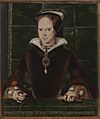 |
Mary I | 18 February 1516 Palace of Placentia |
19 July 1553 | Philip II of Spain | 17 November 1558 St James's Palace aged 42 |
Daughter of Henry VIII and Catherine of Aragon |
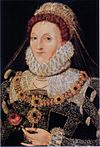 |
Elizabeth I | 7 September 1533 Greenwich Palace |
17 November 1558 | — | 24 March 1603 Richmond Palace aged 69 |
Daughter of Henry VIII and Anne Boleyn |
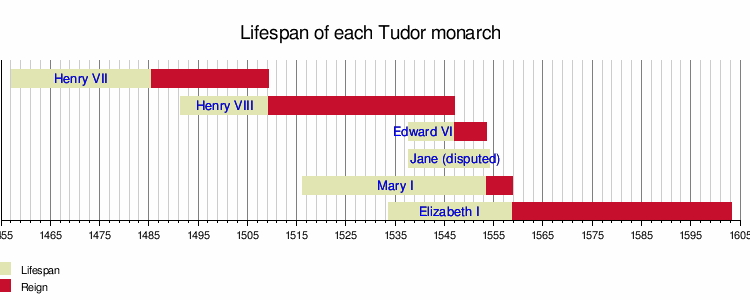
Tudor Symbols and Badges
The Tudor family used special symbols to show their power and history.
The Tudor Rose
The most famous symbol of the Tudor family is the Tudor rose (you can see it at the top of this page). When Henry Tudor became king, he ended the Wars of the Roses. These wars were fought between the House of Lancaster (whose symbol was a red rose) and the House of York (whose symbol was a white rose).
To bring everyone together, Henry married Elizabeth of York. He then created the Tudor Rose. It combined the White Rose of York and the Red Rose of Lancaster. This symbol showed the Tudors' right to rule and how they united the kingdom after the wars. Every English and British monarch since Henry VII has used it.
Other Tudor Badges
The Welsh Dragon was another important symbol. It honored the Tudors' Welsh background.
Royal Monograms
The Tudors also used special letters, called monograms, to represent themselves.
The Tudor Name
The name "Tudor" comes from the Welsh word "Tewdur," meaning "territory" and "king." Owen Tudor took it as a family name. However, the Tudor kings and queens rarely used "Tudor" as their royal name. Kings and queens usually didn't need a surname. They were known as "of England." For example, Henry VII was likely called "Henry of Richmond" before he became king.
When Richard III called Henry "Henry Tudor," he wanted to make Henry seem less important because of his Welsh roots. Richard wanted to show himself as a "true" English royal, a "Plantagenet."
Images for kids
-
Catherine of Aragon: her marriage was ended by the Church of England because she did not have a male heir.
-
Thomas Cromwell, Henry VIII's chief minister. He was in charge of closing the monasteries.
-
Henry VIII: His disagreements with the Pope led to the creation of the Church of England.
-
Thomas Cranmer, Henry's first Protestant Archbishop of Canterbury. He created the Book of Common Prayer during Edward VI's reign.
-
A small boy with a big mind: Edward VI, who wanted a Protestant ruler after him. He changed his father's will to allow Lady Jane Grey to become queen.
-
Mary I of England, who tried to bring England back to the Roman Catholic Church.
-
Protestants Hugh Latimer and Nicholas Ridley being burned at the stake during Mary's reign.
-
Elizabeth I at her coronation on 15 January 1559.
-
Mary, Queen of Scots, who planned with English nobles to take the English throne.
-
Pope Pius V, who removed Elizabeth from the Catholic Church and told her subjects not to follow her.
-
The Spanish Armada: Catholic Spain's attempt to remove Elizabeth from power and take control of England.
-
Coat of arms of Edmund Tudor, 1st Earl of Richmond.
-
Coat of arms of Jasper Tudor, Duke of Bedford.
-
Coat of arms of Mary I and her husband, Philip II of Spain.
See also
 In Spanish: Casa de Tudor para niños
In Spanish: Casa de Tudor para niños


